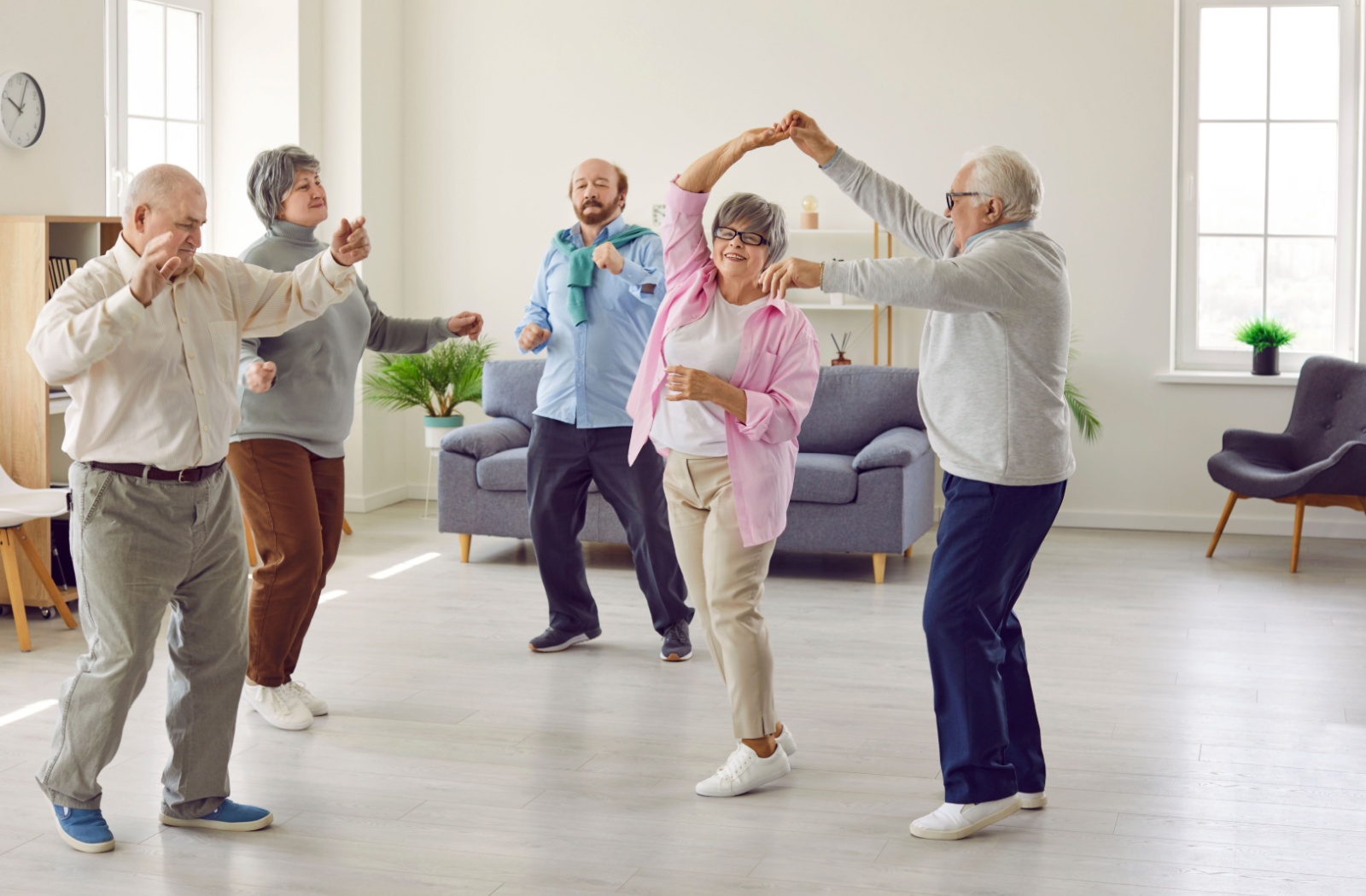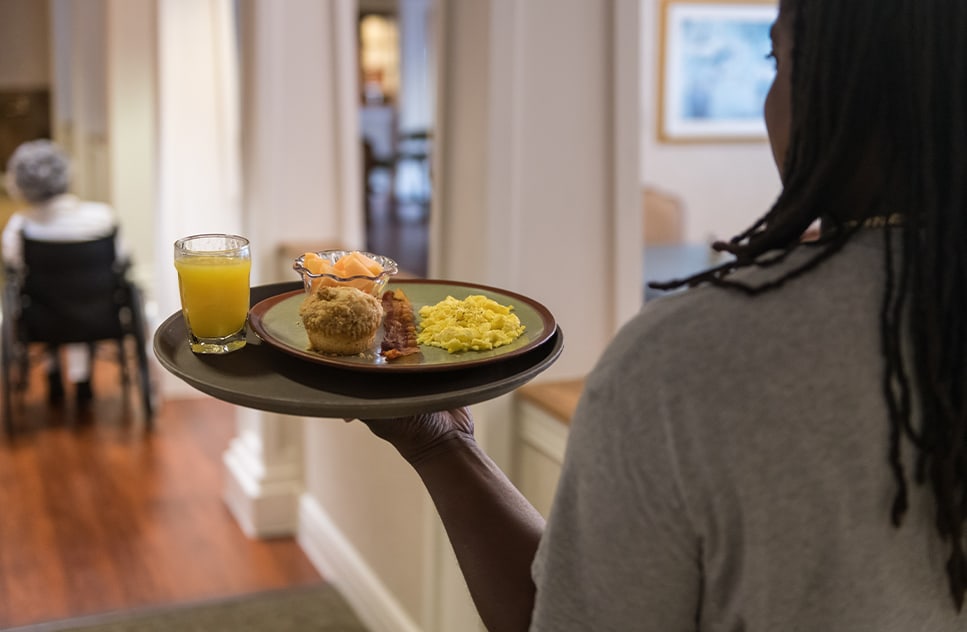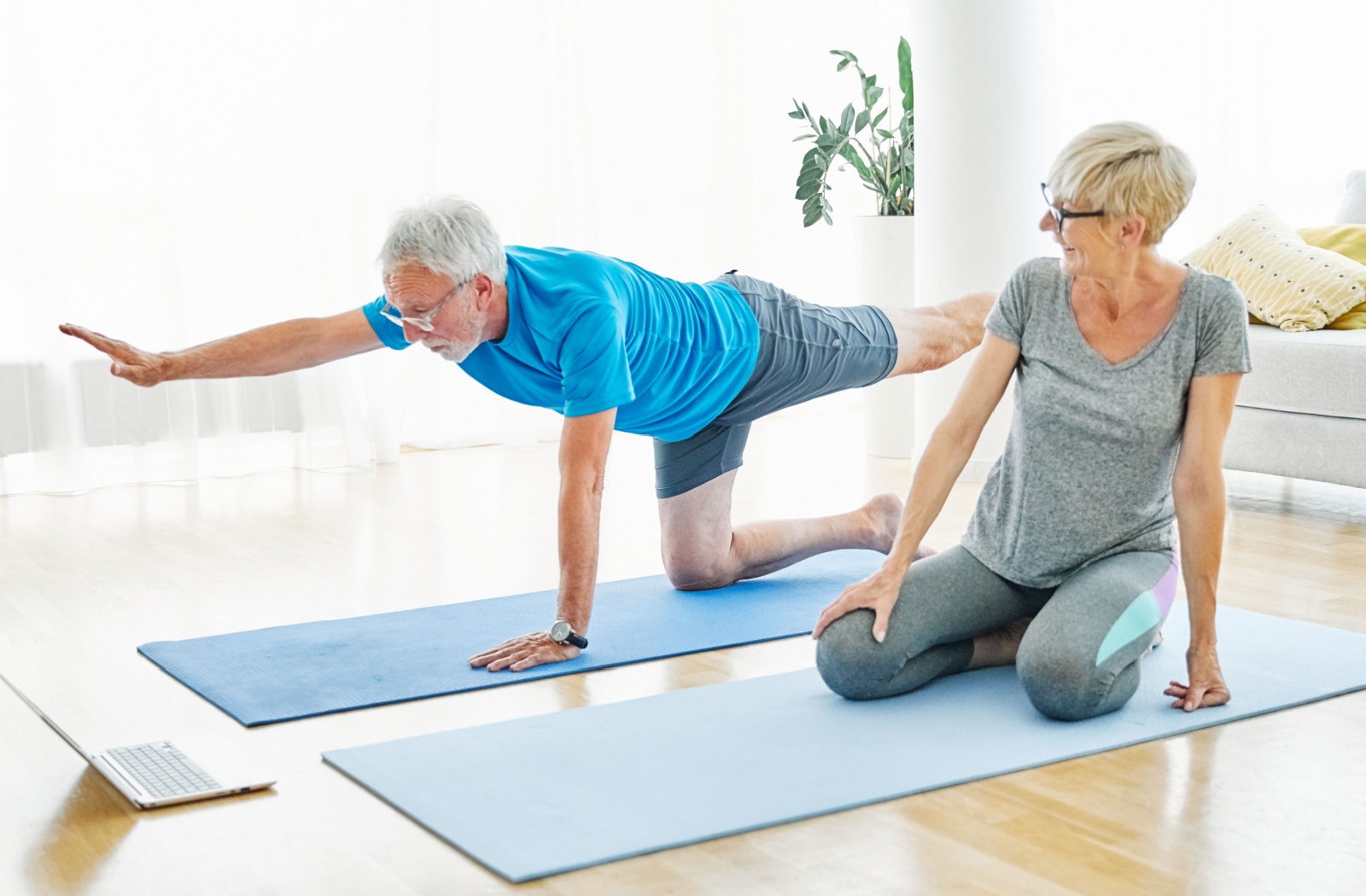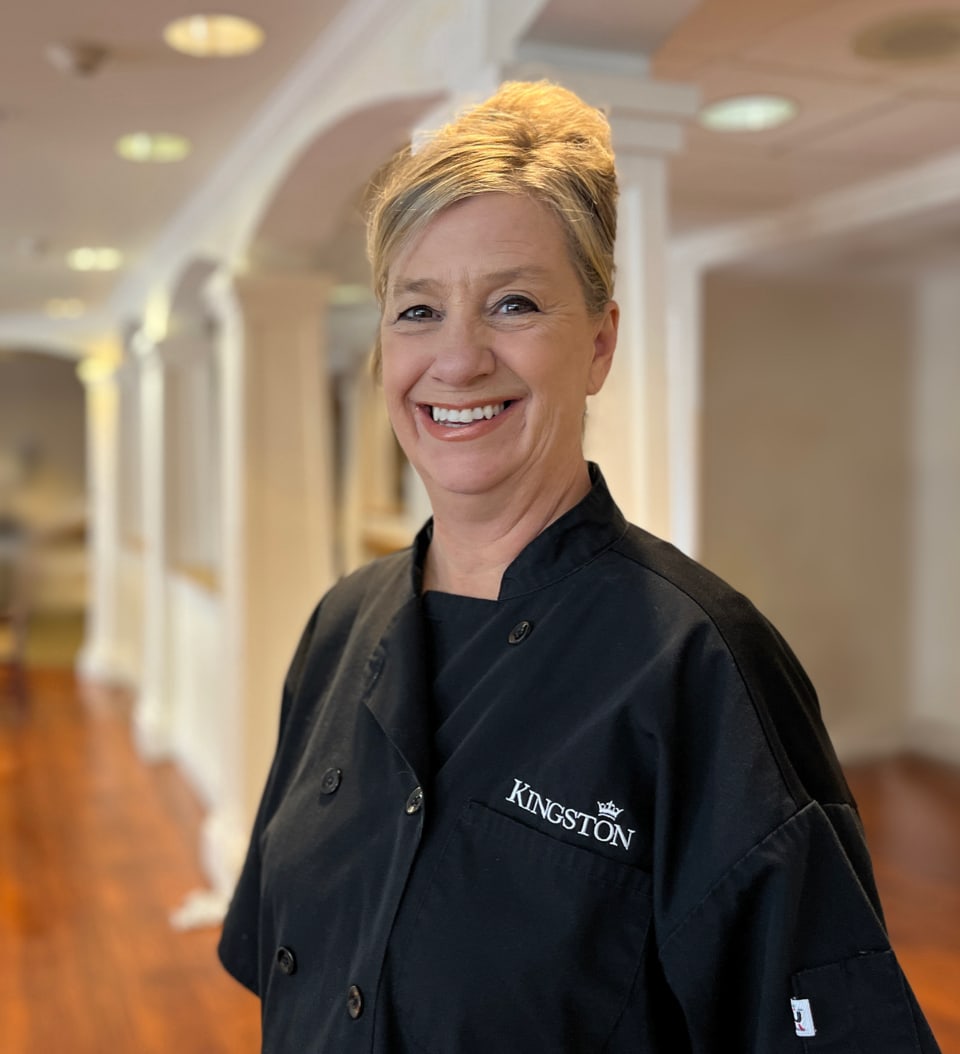Staying active is one of the most important things that we can do as we get older. For our loved ones in memory care, the benefits of physical activity can be even more significant. Not only does physical activity promote better physical health, it can also enhance mental well-being and provide a sense of joy and engagement. Some physical activities for seniors in memory care can include:
- Gentle yoga
- Walking groups
- Tai Chi
- Chair exercises
- Dancing
- Gardening
Incorporating some fun and meaningful activities into their daily routine can significantly improve seniors’ quality of life. Such activities offer a wonderful opportunity for your loved ones to stay connected, stimulated, and happy.
Gentle Yoga
Yoga combines physical movement with mental relaxation. While this can require high levels of skill, there are gentler forms of yoga that emphasize slow, deliberate movements and poses that are easy on the body. This type of yoga involves stretching exercises, gentle strength-building postures, and deep breathing techniques that promote relaxation and mindfulness.
For seniors, gentle yoga provides numerous benefits, while also reducing the risk of overexertion:
- Yoga improves balance and coordination, reducing the risk of falls.
- Breathing exercises can help manage anxiety and improve focus.
- Mindfulness aspects of yoga can foster a sense of calm and well-being.
Early yoga sessions can be guided by an instructor, who ensures the movements are performed safely, often using props such as chairs or blocks to support the poses.
Walking Groups
Walking is one of the simplest yet most effective forms of exercise. Walking groups are organized gatherings in which seniors can participate in a shared walking activity, often led by a caregiver or a volunteer. These groups provide a structured yet flexible environment for seniors to engage in light exercise while also enjoying the outdoors (or even indoor walking tracks).
Walking in a group offers several benefits: it encourages social interaction, making the activity more enjoyable and motivating; it reduces feelings of isolation; and it provides a safer environment, as participants are walking with others while under supervision.
Organized walking groups allow seniors to enjoy nature, socialize, and stay active.
Tai Chi
Tai Chi, often described as “meditation in motion,” is a centuries-old Chinese practice that combines low-impact physical exercise with mindfulness. This art form involves a series of slow, graceful movements that flow seamlessly into one another, accompanied by deep, controlled breathing. Originally developed as a martial art, Tai Chi is widely practiced today for its health benefits, especially among seniors.
Some of the benefits of Tai Chi for seniors include:
- Enhancing balance and coordination, which is crucial for preventing falls
- Reducing stress and promoting mental clarity (in its meditative aspect)
- Encouraging gentle movements that improve flexibility and overall physical health
Chair Exercises
Chair exercises are excellent for seniors with limited mobility. These exercises can be done while sitting, making them accessible to almost everyone. They range from simple leg lifts and arm stretches to more complex routines that involve resistance bands or light weights.
The primary goal of chair exercises is to improve strength, flexibility, and circulation without the need for standing. This makes chair exercises an excellent option for those who find traditional exercise routines too challenging.
Chair exercises offer a safe and effective way to maintain physical health, as the chair’s support reduces the risk of falls and injuries..

Dancing
Dancing is a fun and engaging way to stay active. It combines physical activity with music, which can be particularly stimulating for seniors in memory care. One of the more appealing benefits of dance is its incredible versatility. Ranging from gentle, slow-paced waltzes to more vibrant, rhythmic dances, dance can be adapted to the abilities and preferences of each participant.
Plus, with dancing comes music! Music can be particularly stimulating for seniors with cognitive difficulties, helping to trigger memories and emotions that may otherwise remain dormant. Dancing can also provide a mental workout as participants follow steps and rhythms—though there’s nothing wrong with some freestyle fun!
Gardening
Gardening is a therapeutic activity that presents a unique combination of light physical exercise and mental engagement. Leisurely yet purposeful, gardening involves tasks such as planting, watering, weeding, and harvesting, all of which encourage fine and gross motor skills.
For seniors, especially those with memory issues, gardening provides an opportunity to connect with nature, offering a sensory-rich experience where they can feel the texture of soil, smell fragrant flowers, and see the vibrant colors of plants.
Gardening’s methodical nature can offer a respite from stress and anxiety through repetitive and gentle movements. It also helps maintain physical health by promoting mobility, flexibility, and strength, all the while creating a serene environment that encourages mindfulness and present-moment awareness.
Moreover, the sense of accomplishment and purpose derived from nurturing a plant can boost self-esteem and emotional well-being.
Staying Active into the Golden Years
Incorporating physical activities into a daily routine not only improves physical health, but also supports cognitive function and emotional well-being. By engaging in regular physical activity, seniors can benefit from a higher quality of life, enhanced memory, and a greater sense of community. That’s why Kingston at Dupont makes staying active a key part of our approach.
If you’re looking for a supportive and engaging memory care community for your loved one, contact us today to learn more about our lifestyle and how we can help them lead more fulfilling and active lives. It’s never too late to incorporate physical activities into your loved ones’ routines!






